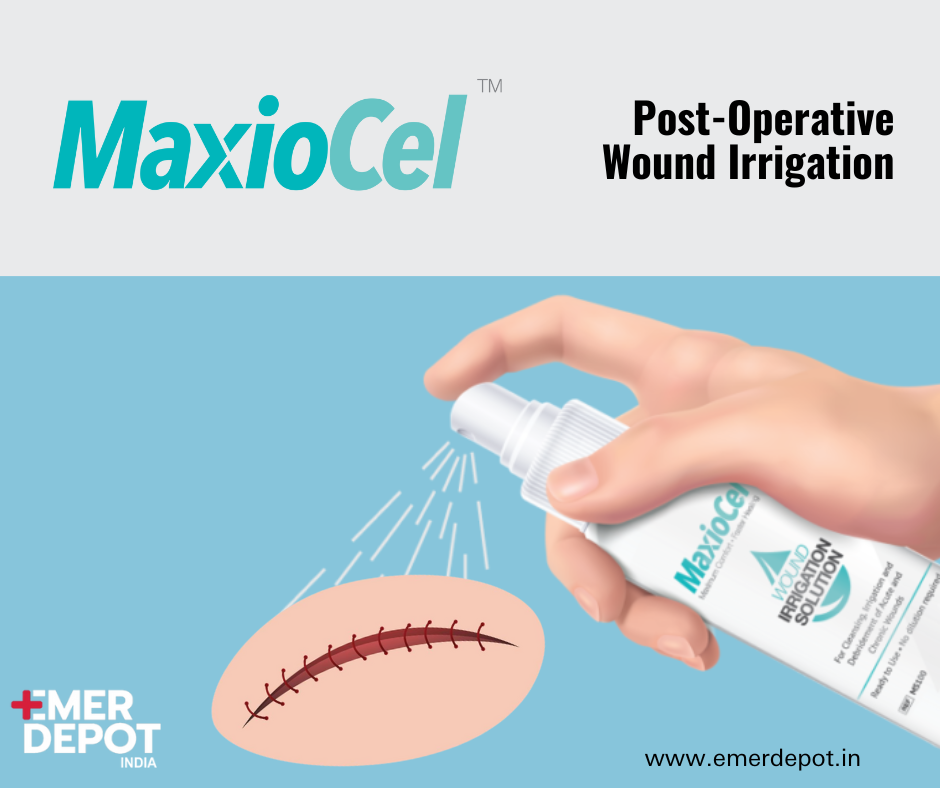Post Operative Wound Irrigation
Post-surgical wound cleansing refers to the process of cleaning and caring for a surgical incision or wound after a surgical procedure has been performed. It involves several steps aimed at reducing the risk of infection, promoting healing, and ensuring the overall well-being of the patient.
Post-surgical wound cleansing is of utmost importance for several reasons:
Prevention of Infection: Surgical wounds are particularly susceptible to infections due to their open nature. Post-surgical wound cleansing helps to remove debris, bacteria, and other contaminants that could lead to infection. Proper cleansing reduces the risk of complications such as cellulitis, abscess formation, or even systemic infections like sepsis.
Promotion of Healing: Clean wounds are more likely to heal efficiently. By removing any foreign material or dead tissue from the wound bed, post-surgical wound cleansing creates an environment that is conducive to the body's natural healing processes. This can help minimize the risk of complications and promote faster healing times.
Reduction of Inflammation: Cleansing the wound helps to reduce inflammation, which is a normal part of the body's response to injury but can impede the healing process if excessive. By removing irritants and contaminants, wound cleansing can help to mitigate inflammation and promote a more controlled healing response.
Enhanced Wound Assessment: Regular cleansing of the surgical wound allows healthcare providers to closely monitor its progress and identify any signs of infection or other complications early on. This enables timely intervention and appropriate adjustments to the treatment plan, leading to better outcomes for the patient.
Patient Comfort: A clean wound is generally less painful and less prone to discomfort or itching. By keeping the wound site clean and free from irritants, post-surgical wound cleansing can contribute to the patient's overall comfort and well-being during the recovery period.
Prevention of Complications: Inadequate wound care can lead to a variety of complications, ranging from minor issues like delayed healing to more severe problems such as wound dehiscence (opening of the wound) or wound infections. Proper post-surgical wound cleansing helps to mitigate these risks and minimize the likelihood of complications arising.
There are various types of wound cleansing agents available, each with its specific properties and purposes. Here are some common types:
Sterile Saline Solution: This is the most commonly used wound cleansing agent. It is a gentle solution of salt in water that helps to rinse away debris and bacteria from the wound without causing irritation.
Wound Cleansers: These are specially formulated solutions designed for wound cleansing. They may contain ingredients such as surfactants to help loosen debris and bacteria, antimicrobial agents to reduce the risk of infection, and moisturizers to prevent drying of the wound bed.
Antiseptic Solutions: Antiseptic solutions like povidone-iodine (Betadine) or chlorhexidine gluconate are sometimes used for wound cleansing. They have antimicrobial properties that help reduce the risk of infection. However, they can be irritating to some people and may not be suitable for use on all wounds.
Hydrogen Peroxide: While hydrogen peroxide was once commonly used for wound cleansing, it is now generally avoided due to its potential to damage healthy tissue and delay wound healing. It can also cause foaming, which may interfere with wound assessment.
Hypochlorous Acid: Hypochlorous acid is a mild antimicrobial agent that is effective against a wide range of bacteria and other microorganisms. It is non-toxic and safe for use on wounds, making it suitable for cleansing wounds without causing irritation.
Soap and Water: In some cases, mild soap and water can be used for wound cleansing, particularly for superficial wounds. However, it's essential to rinse the wound thoroughly to remove any soap residue, as it can cause irritation.
Normal Saline Irrigation: Normal saline irrigation involves using a syringe or irrigation bottle to flush the wound with sterile saline solution. It helps to remove debris and bacteria from the wound and is commonly used in surgical settings.
Overall, post-surgical wound cleansing plays a crucial role in preventing infections, promoting healing, reducing inflammation, facilitating wound assessment, ensuring patient comfort, and preventing complications.
Chitosan wound irrigation Solution
Where to buy maxiocel wound irrigation solution in INDIA?

